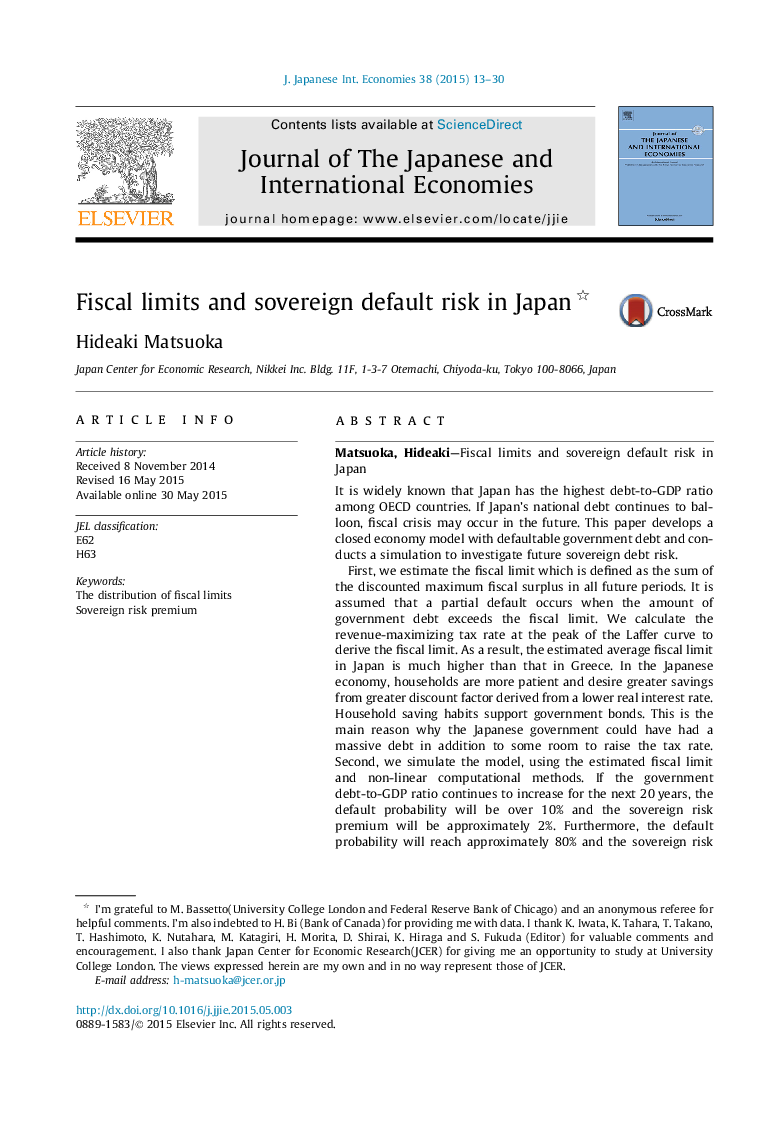| Article ID | Journal | Published Year | Pages | File Type |
|---|---|---|---|---|
| 965140 | Journal of the Japanese and International Economies | 2015 | 18 Pages |
Abstract
First, we estimate the fiscal limit which is defined as the sum of the discounted maximum fiscal surplus in all future periods. It is assumed that a partial default occurs when the amount of government debt exceeds the fiscal limit. We calculate the revenue-maximizing tax rate at the peak of the Laffer curve to derive the fiscal limit. As a result, the estimated average fiscal limit in Japan is much higher than that in Greece. In the Japanese economy, households are more patient and desire greater savings from greater discount factor derived from a lower real interest rate. Household saving habits support government bonds. This is the main reason why the Japanese government could have had a massive debt in addition to some room to raise the tax rate. Second, we simulate the model, using the estimated fiscal limit and non-linear computational methods. If the government debt-to-GDP ratio continues to increase for the next 20Â years, the default probability will be over 10% and the sovereign risk premium will be approximately 2%. Furthermore, the default probability will reach approximately 80% and the sovereign risk premium will be 10% 30Â years later.
Related Topics
Social Sciences and Humanities
Economics, Econometrics and Finance
Economics and Econometrics
Authors
Hideaki Matsuoka,
